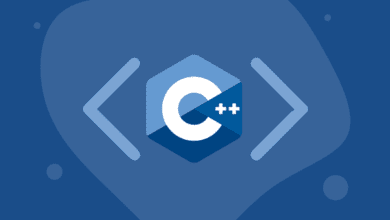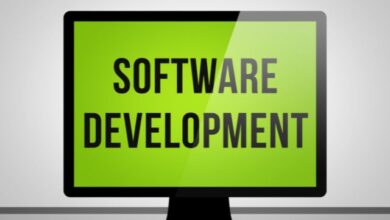8 Things You Should Know about Cloud Infrastructure Entitlement Management

Organizations must be able to secure their data both in the cloud and on-premises. To do that effectively they need a comprehensive Cloud Infrastructure Entitlement Management strategy. Understanding what should be included in such a strategy is essential for businesses looking for ways to optimize access control and keep up with an ever-increasing demand for applications across the network.
In this post, we’ll discuss 8 essential points you should know when creating your Cloud Infrastructure Entitlement Management plan, so your organization can have secure access control from end-to-end.
Managing Access Permissions in the Cloud
Managing access permissions is a critical component of Cloud Infrastructure Entitlement Management. Assigning the right privileges to the correct individuals promotes security, efficiency, and compliance within the cloud environment. It’s essential to regularly review and adjust these permissions as roles and responsibilities within your organization evolve.
Adopting CIEM features, such as automated role-based access control and user activity monitoring, can greatly simplify this process and help ensure you maintain proper access permissions. This is especially critical in today’s hybrid cloud environment where data and applications are constantly shifting between on-premises and cloud-hosted environments.
Understanding Entitlements and Permissions
Entitlements and permissions are integral aspects of the Cloud Infrastructure Entitlement Management strategy. Essentially, entitlements refer to the rights or privileges granted to a user or a group within an application or a system. These can encompass actions such as creating, reading, updating, or deleting certain data. Permissions, on the other hand, are the actual settings that allow or restrict these actions.
Therefore, understanding the difference and the interplay between these two is crucial. It’s all about managing who has access to what. This involves not just identifying the entitlements necessary for each role, but also ensuring that these permissions are appropriately allocated and adjusted as the roles change.
Achieving Least Privilege Access
Achieving least privilege access is crucial in Cloud Infrastructure Entitlement Management. The principle of least privilege (PoLP) recommends that users and systems should be given the minimum levels of access — or permissions— necessary to perform their tasks. The aim is to limit the potential damage in the event of a security breach by reducing the number of targets that an attacker could exploit.
It necessitates a regular audit of user permissions, removing unnecessary entitlements, and promptly revoking access when a user’s role changes or they leave the organization. Implementing least-privilege access can be a complex process, particularly in a dynamic cloud environment. However, the use of CIEM tools can significantly streamline the task by automating the identification and management of excessive permissions. It’s a critical step towards enhancing your cloud security posture.
Monitoring and Auditing Entitlements
Monitoring and auditing entitlements is a critical part of maintaining a robust Cloud Infrastructure Entitlement Management strategy. This involves keeping an eye on who has access to what, identifying any changes in access patterns, and ensuring that everyone has the appropriate permissions they need to do their job, and nothing more. Regular audits can help identify any unnecessary or outdated permissions, which can then be promptly revoked to maintain a least privileged environment.
Monitoring can be done in real-time using CIEM tools, giving you immediate insight into any potential security risks. For instance, if a user suddenly accesses a sensitive system or data they usually don’t interact with, it can be an indication of a potential security threat.
Auditing, on the other hand, is a more thorough review that is typically conducted regularly (for example, quarterly or annually). It provides a comprehensive view of your organization’s access controls, helping you understand where your security measures might be lacking and where improvements can be made.
Reducing the Risk of Data Breaches
Preventing data breaches is a significant part of a Cloud Infrastructure Entitlement Management strategy. Data breaches can result in significant financial loss, damage to a company’s reputation, and loss of customer trust. Reducing the risk involves a multi-faceted approach. Adopting the principle of least privilege can minimize the potential attack surface.
Regular audits and real-time monitoring of entitlements can help identify unusual behavior, such as a user accessing sensitive data they don’t usually interact with, which could potentially be a sign of a security breach. Finally, employing encryption for data, both at rest and in transit, can provide an additional layer of security by making the data unreadable to unauthorized individuals.

Automation and Access Control
Automation plays a pivotal role in Cloud Infrastructure Entitlement Management, particularly when it comes to access control. Automated systems can streamline the process of assigning, updating, and revoking permissions, reducing manual labor and minimizing human error. Tools that support automation can quickly adapt to changes in user roles and responsibilities, ensuring that access rights remain aligned with business needs.
Automation can aid in enforcing consistent access policies across all cloud platforms and applications, which is essential in a hybrid cloud environment. This consistency is beneficial not only for security but also for regulatory compliance.
Compliance and Regulatory Requirements
Adherence to compliance and regulatory requirements is another essential aspect of a solid Cloud Infrastructure Entitlement Management strategy. Depending on the industry your organization operates in, such as healthcare or finance, there may be specific regulations, like HIPAA or PCI DSS, that dictate how sensitive data should be handled and protected. As part of your CIEM strategy, you should ensure that access controls, data protection measures, and audit mechanisms are in place to comply with these laws and regulations.
This includes the ability to produce detailed audit logs in case of a compliance audit or investigation. Furthermore, regulations often require notifications of breaches or unauthorized access within a certain time frame, so prompt identification and response to such incidents are crucial. Employing automated CIEM tools can help in efficiently managing these requirements, mitigating risks, and reducing the potential costs of non-compliance.
Integration with Identity and Access Management
Integrating Cloud Infrastructure Entitlement Management with Identity and Access Management (IAM) is a strategic move that can significantly enhance cloud security. IAM systems provide a framework for business processes that facilitate electronic or digital identities. They encompass the essential elements of identifying, authenticating, and authorizing individuals or groups to have access to applications, systems, or networks based on established identities and assigned privileges.
When integrated with CIEM, it ensures that access controls are consistently enforced across all cloud and on-premises environments. This not only streamlines the management of user identities and their access rights but also enhances visibility into user activities across the network.
In conclusion, Cloud Infrastructure Entitlement Management is a critical aspect of securing your organization’s data in the cloud. By understanding and implementing these 8 points, you can efficiently manage access permissions, reduce security risks, and ensure compliance with regulatory requirements.
Remember to regularly review and adjust your CIEM strategy as your organization evolves to maintain a robust security posture. Always keep in mind the principle of least privilege to minimize potential damage in the event of a security breach.





